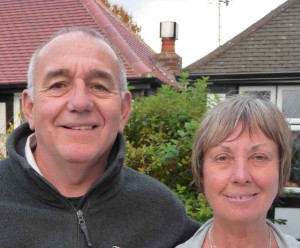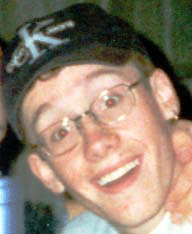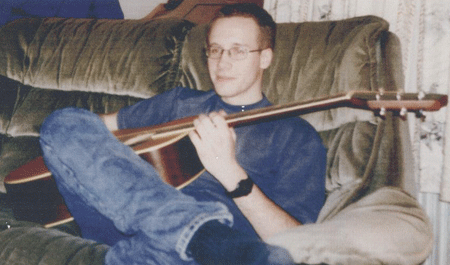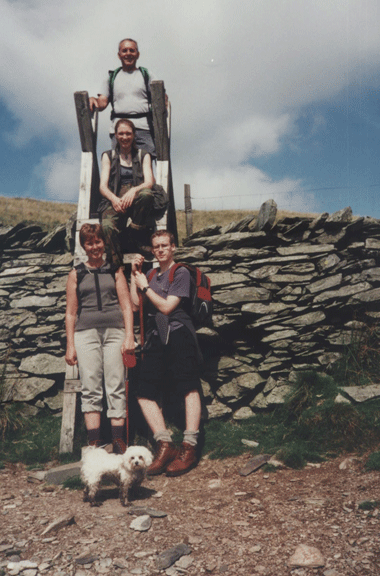Coroner Inquest Support – Jeff and Sandra Markham
If you have lost someone to young sudden cardiac death (YSCD) and do not think the cause of death given at inquest was a true reflection of what happened, please read this article.

Our story will show that this can be achieved without massive cost, with no previous legal knowledge and within a reasonable time scale.
When our son James collapsed and died outside the family home in November 2001 we were all shocked. Like many of the stories on the CRY website, he was seemingly fit and healthy and just 21 years of age.

Initial cardiac testing of family members did not show anything abnormal, but it was agreed to closely monitor our daughter Abi.
The original inquest into James’s death came and went and we do not remember much about it. I think at the time we were just numb and worried about our surviving daughter. The inquest recorded a verdict of ‘Unascertained’ and ‘Natural Causes’. It was not until a few years later that we started to question this verdict. By now were staring to function a little more clearly and were getting expert advice and information from CRY. We believed that fit and healthy young people did not just collapse and die without good reason and vowed to find out what had really happened to James.
We were fortunate in knowing Professor Winters, a geneticist, and he agreed to have James’s blood DNA tested. We understood at the time that this was not available through the NHS in England and the samples were sent off to Denmark. It took three years to get the results back to the UK and during this time Professor Winters passed away. James’s case was taken up by another geneticist, Dr Rosser, and she concluded that the results of the DNA testing clearly showed that James had died of long QT syndrome. This proved that Dr Sharma’s original suspicion was correct.
This information allowed family members to be DNA tested, and by now – 2006 – testing was available through the NHS in England. A couple of months later we found that no other family members carried the gene responsible for James’s death. We were pleased to know our surviving daughter was not at risk – and also thought we had the information to take to our coroner to have James’s death certificate changed.
Our coroner, Alison M Thompson MBE, was extremely helpful. She told us that if she were able, then based on the new evidence, she would re-open the inquest. Unfortunately, it transpired that the law did not allow her to do so. This was a disappointment to us and we left the case until early in 2012 when we decided to have one more attempt at getting the inquest overturned.
Initially we wrote to our MP, Nick Hurd, giving him all the case details. He was sympathetic and suggested we write to The Attorney General’s Office. We did this and were advised by his office to make a formal application to The High Court to have the original inquest overturned. At this stage we took some legal advice and saw a local solicitor. He was frank in saying that he had not come across this sort of case before, but thought that based on the firm DNA evidence we had a good case. He advised us that, should we wish, we could represent ourselves in court. This turned out to be good advice, saving us lots of money. It also transpired that throughout the whole process, many of the people within the legal system also said that they had not come across this sort of case before.
Here are the key elements of the process we went through:
- Evidence: This seemed to be the critical area. Our original death certificate had ‘Unascertained’ and ‘Unknown Natural Causes’. In getting our case to court we had DNA evidence from James’s blood plus correspondence from a geneticist to say the death was a result of long QT syndrome.
- Time scale: Although we had several abortive attempts to get this underway – and there was some correspondence with our MP that would not be needed in subsequent cases – the final process took about eight months. That is from the time of the first correspondence to The Attorney General; through submission of evidence, attending the High Court and having the fresh inquest; to receiving the new death certificate.
- Financial cost: At the outset of the process the initial advice from the solicitor cost £50. There was the actual cost of taking the Court action – £465; plus the cost of photocopies – about £50. At the time, legal aid would have been available if annual income was below about £22,000.
- Time needed: We did not keep a record of how much actual time we spent on the case and there were periods of little activity where the process was grinding along. However, there were two trips to The High Court in London – one to submit the papers and one for the actual hearing; and there was also a trip to our Coroner’s Office to serve the papers. We could have done the latter by post, but wanted to ensure she got the papers and also ask a few questions.
- Skills: We had no previous legal experience and based on our experiences we do not think it necessary to employ a solicitor and certainly not a barrister. The Attorney General’s Office had a legal advisor and we found their office very helpful in giving a broad overview of the process. We also found out on the day of the hearing that we may have been able to secure advice from volunteers based at the actual Courts.
- Court proceedings: Our concerns were that the actual court proceedings would be stressful, but fortunately these were completely unfounded. We arrived in court with a prepared statement that we thought we would need to read it out. However, when the two trial Judges entered the court one of them told us straight away that our case had been considered in chambers and that the judgement was in a our favour. We then relaxed to hear the reading of the actual Judgement and the whole procedure took less than half an hour. Within another month we had our fresh inquest and the new death certificate was issued a couple of weeks later.
In conclusion, we think the effort was worthwhile and that the process was quicker and smoother than we thought it would be. We were fortunate to have a very supportive coroner and all the people we dealt with throughout the process were extremely helpful.

The Chief Coroner was one of the trial judges and in his judgement he went on to say that he was in the process of drawing up new guidelines for all coroners in England and Wales.
We hope this judgement will be a landmark in allowing other families that feel the same way as us to take the same action.

We have kept all the necessary documentation and are happy to pass copies of them on, along with any advice that we can.
Please contact us initially through the CRY office if you would like more information, or have any questions you would like to ask.
Best wishes,
Sandra & Jeff Markham
April 2014





